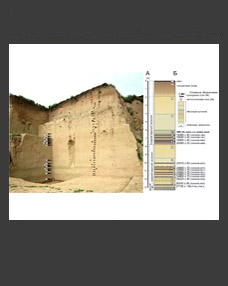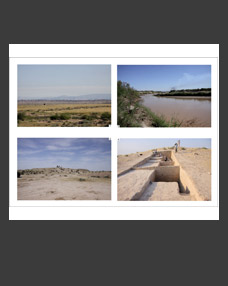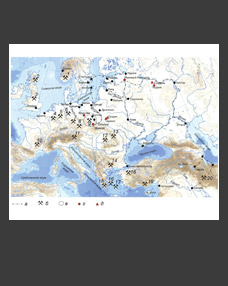Vladimir S. Myglana, #, Anna V. Taynika, ##, Valentin V. Barinova, ###, Maya O. Filatovab, ####, Varvara S. Busovac, #####, Olga V. Sychevac, ######, Oksana V. Naumovaa, ####### and Zakhar Yu. Zharnikova, ########
aSiberian Federal University, Krasnoyarsk, Russia
bInstitute of Archaeology and Ethnography, Siberian Branch RAS, Novosibirsk, Russia
cInstitute for the History of Material Culture RAS, St. Petersburg, Russia
#E-mail: vmiglan@sfu-kras.ru
##E-mail: ataynik@sfu-kras.ru
###E-mail: vvbarinov@sfu-kras.ru
####E-mail: mayaphylatova@gmail.com
#####E-mail: kulturnijkarman@gmail.com
######E-mail: olysycheva@gmail.com
#######E-mail: ovnaumova@sfu-kras.ru
########E-mail: zzharnikov@sfu-kras.ru
Keywords: Republic of Tyva, dendroarchaeology, tree-ring chronology (DRC), charcoal, iron smelting forge.
Traditionally, charcoal from archaeological sites was considered an unsuitable material for dendrochronological dating. The authors examined 23 coal samples from the Kara-Dyt II site (Republic of Tyva, Russia). An analysis of existing solutions for sample preparation of such material showed their low speed and efficiency. This article uses the approach developed by the authors, which allows for quick and high-quality sample preparation of a large number of charcoals with minimal labour costs. As a result, it was possible to construct a 138-year tree-ring chronology using archaeological charcoal. Further work in this direction will make it possible to solve the problem of constructing a long-term tree-ring chronology in the arid zone of South Siberia. This chronology provides a unique tool for determining the calendar age of wood from numerous burial mounds in Tuva and for an in-depth study of the relationship between climate and society over the past two millennia.
DOI: 10.31857/S0869606324010066, EDN: ZWFEIM







